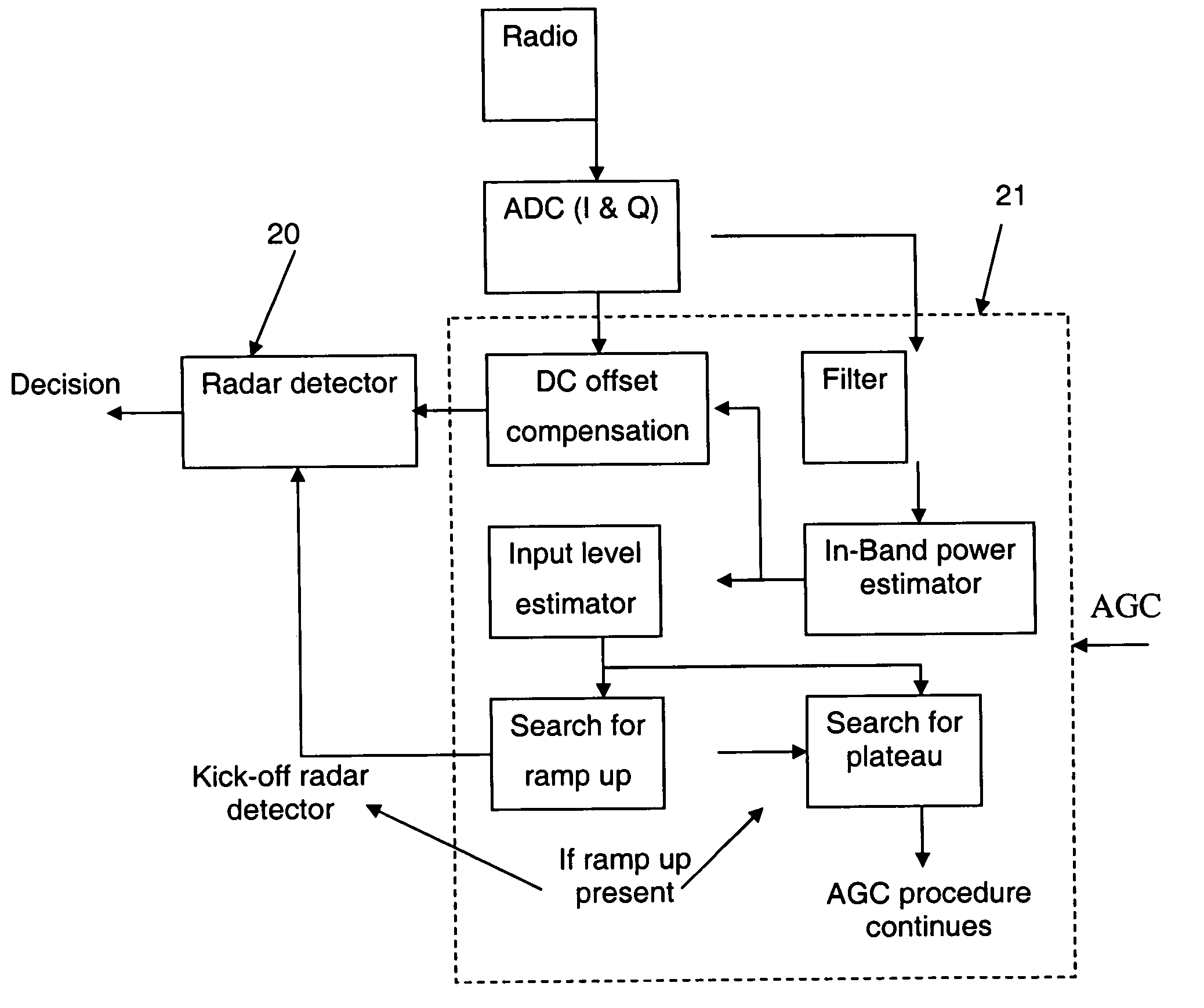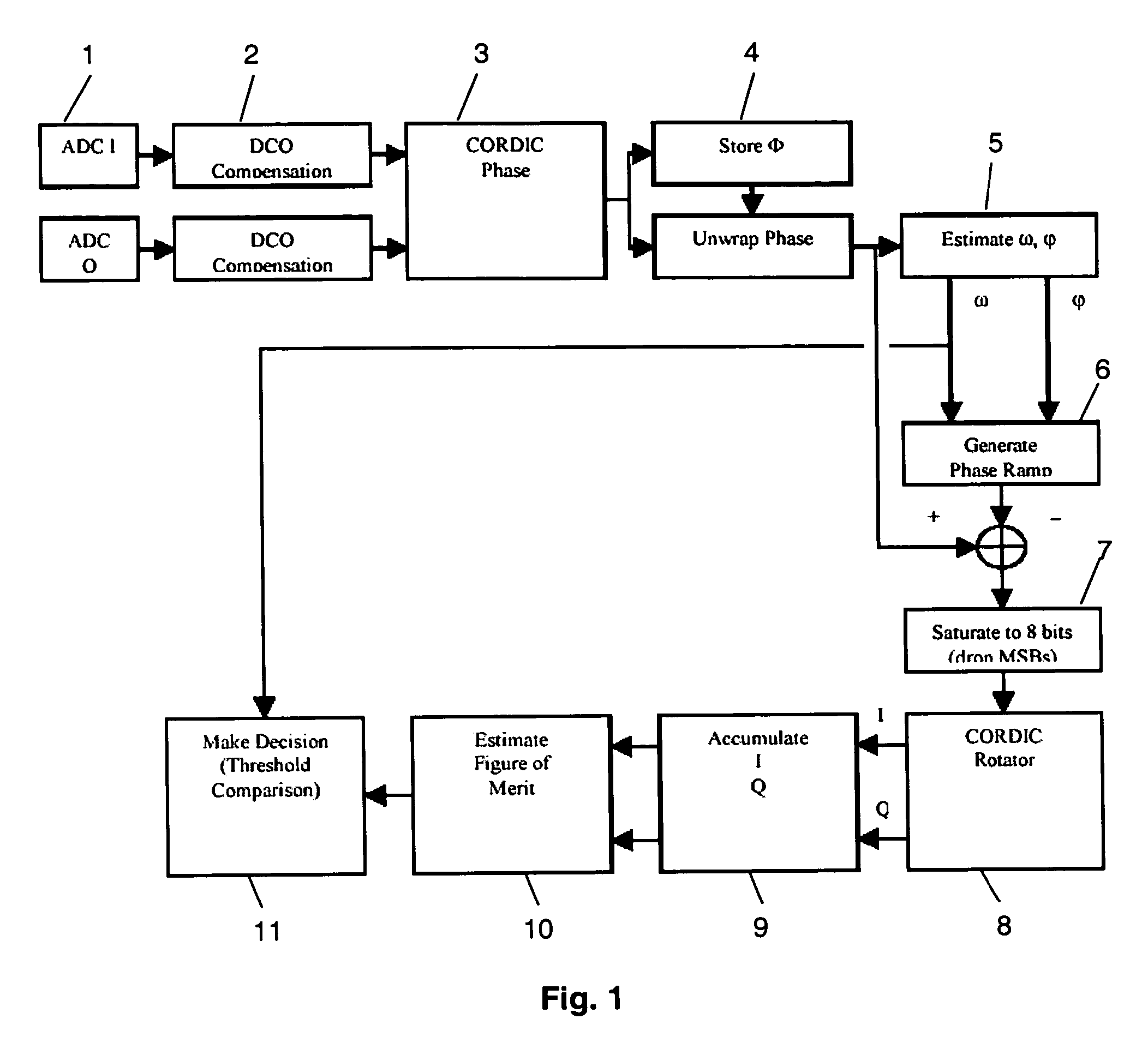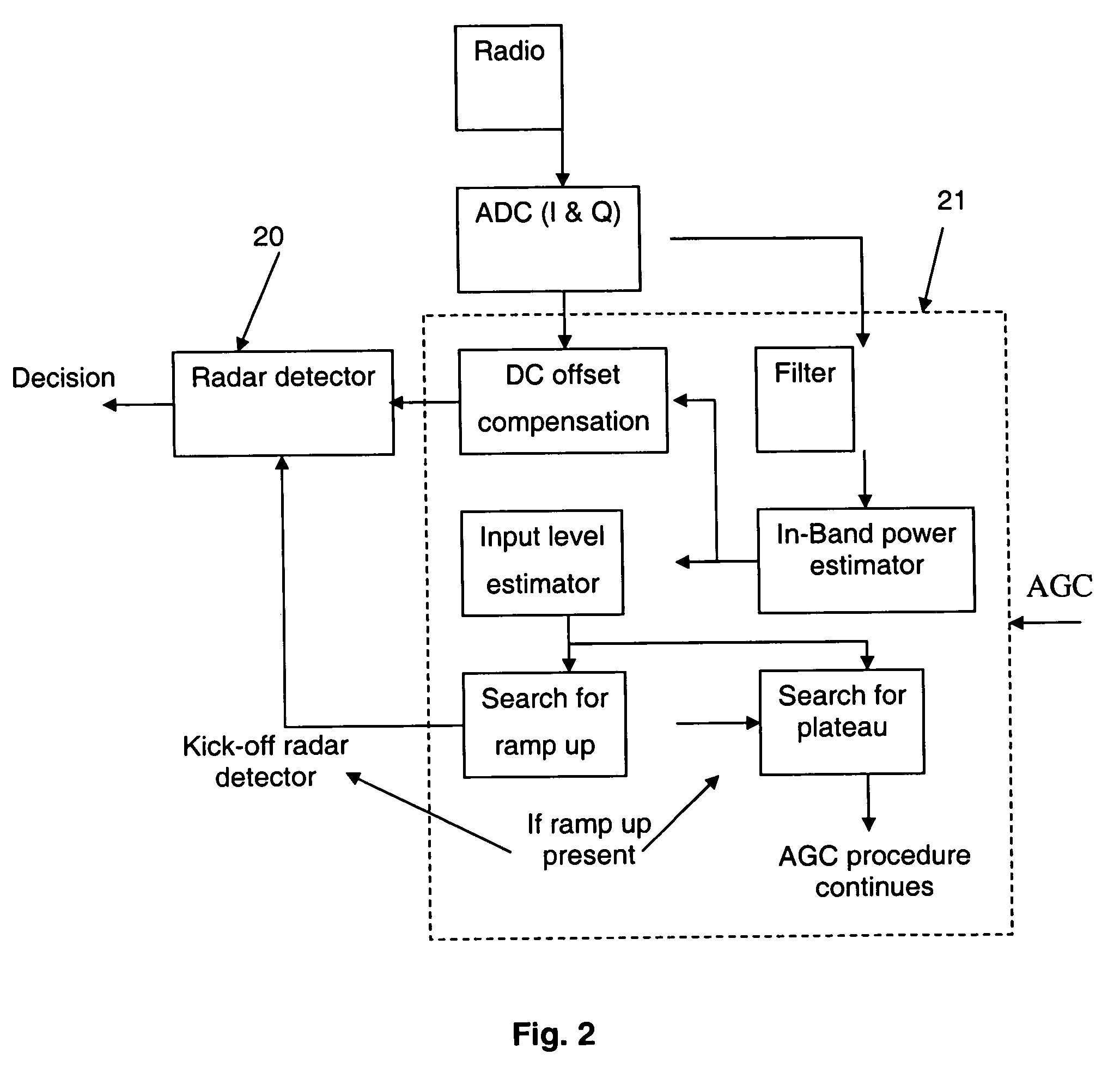Radar detector and radar detecting method for WLAN systems according to 802.11 wireless communication standards
- Summary
- Abstract
- Description
- Claims
- Application Information
AI Technical Summary
Benefits of technology
Problems solved by technology
Method used
Image
Examples
Embodiment Construction
[0016] Two schemes are available depending on the nature of the received radar pulse:
a. Sinusoidal Pulse Detector:
[0017] The sinusoidal radar detector of FIG. 1 is based on the fact that any sinusoidal function is fully characterized by two parameters phase-wise: Its angular frequency, Its initial phase.
[0018] Hence, the phase model for the sinusoidal pulse is an affined line whose slope and intersection with the phase axis respectively correspond to the angular frequency and initial phase just mentioned. In a nutshell, once a ramp up detection occurs (because a considerable signal is present in the frequency band), a short sample of the incoming signal is acquired and DC offset compensated. In a preferred implementation, thirty two (32) 60-MHz samples of I- and Q signals are captured and converted by analog-to-digital converters (Block 1) to digital signals. A coarse estimate of the DC offset is available thanks to a digital RSSI block (usually present in a WLAN receiver) where...
PUM
 Login to View More
Login to View More Abstract
Description
Claims
Application Information
 Login to View More
Login to View More - R&D
- Intellectual Property
- Life Sciences
- Materials
- Tech Scout
- Unparalleled Data Quality
- Higher Quality Content
- 60% Fewer Hallucinations
Browse by: Latest US Patents, China's latest patents, Technical Efficacy Thesaurus, Application Domain, Technology Topic, Popular Technical Reports.
© 2025 PatSnap. All rights reserved.Legal|Privacy policy|Modern Slavery Act Transparency Statement|Sitemap|About US| Contact US: help@patsnap.com



